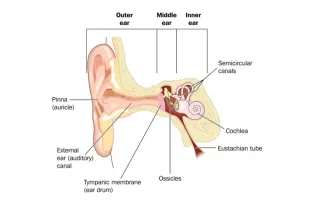Glue ear, also known as otitis media with effusion (OME), is a condition where fluid accumulates in the middle ear without signs of infection. This fluid buildup can lead to hearing difficulties because it prevents the eardrum and ossicles from vibrating properly, which is essential for sound transmission.
Causes of Glue Ear:
- Eustachian Tube Dysfunction: The eustachian tube, which connects the middle ear to the back of the nose and throat, may not function properly, leading to fluid retention.
- Infections: Recurrent ear infections or upper respiratory infections can lead to fluid buildup.
- Allergies: Allergic reactions can cause inflammation and fluid accumulation in the middle ear.
Symptoms of Glue Ear:
- Hearing loss or difficulty hearing
- A feeling of fullness or pressure in the ear
- Balance problems
- Delayed speech and language development in children
Diagnosis and Treatment:
Glue ear is typically diagnosed through a combination of medical history, physical examination, and tests such as tympanometry, which measures the movement of the eardrum. An audiogram may also be conducted to assess hearing levels.
Treatment options depend on the severity and duration of the condition:
- Watchful Waiting: In many cases, glue ear resolves on its own within a few months. Regular monitoring by a healthcare provider is recommended.
- Hearing Aids: These may be used to improve hearing while waiting for the condition to resolve naturally.
- Autoinflation: Techniques such as blowing up a balloon through the nose (using devices like Otovent) can help open the eustachian tube and drain fluid.
- Surgery: If the condition persists for more than three months or significantly impacts hearing and development, surgical intervention may be necessary. This can include the insertion of grommets (tiny tubes) into the eardrum to ventilate the middle ear and allow fluid to drain.



